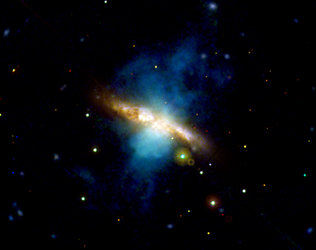Accept all cookies Accept only essential cookies See our Cookie Notice

About ESA
The European Space Agency (ESA) is Europe’s gateway to space. Its mission is to shape the development of Europe’s space capability and ensure that investment in space continues to deliver benefits to the citizens of Europe and the world.
Highlights
ESA - United space in Europe
This is ESA ESA facts Member States & Cooperating States Funding Director General Top management For Member State Delegations European vision European Space Policy ESA & EU Space Councils Responsibility & Sustainability Annual Report Calendar of meetings Corporate newsEstablishments & sites
ESA Headquarters ESA ESTEC ESA ESOC ESA ESRIN ESA EAC ESA ESAC Europe's Spaceport ESA ESEC ESA ECSAT Brussels Office Washington OfficeWorking with ESA
Business with ESA ESA Commercialisation Gateway Law at ESA Careers Cyber resilience at ESA IT at ESA Newsroom Partnerships Merchandising Licence Education Open Space Innovation Platform Integrity and Reporting Administrative Tribunal Health and SafetyMore about ESA
History ESA Historical Archives Exhibitions Publications Art & Culture ESA Merchandise Kids Diversity ESA Brand Centre ESA ChampionsSpace in Member States
Find out more about space activities in our 23 Member States, and understand how ESA works together with their national agencies, institutions and organisations.
Science & Exploration
Exploring our Solar System and unlocking the secrets of the Universe
Go to topicAstronauts
Missions
Juice Euclid Webb Solar Orbiter BepiColombo Gaia ExoMars Cheops Exoplanet missions More missionsActivities
International Space Station Orion service module Gateway Concordia Caves & Pangaea BenefitsLatest
Space Safety
Protecting life and infrastructure on Earth and in orbit
Go to topicAsteroids
Asteroids and Planetary Defence Asteroid danger explained Flyeye telescope: asteroid detection Hera mission: asteroid deflection Near-Earth Object Coordination CentreSpace junk
About space debris Space debris by the numbers Space Environment Report In space refuelling, refurbishing and removingSafety from space
Clean Space ecodesign Zero Debris Technologies Space for Earth Supporting Sustainable DevelopmentApplications
Using space to benefit citizens and meet future challenges on Earth
Go to topicObserving the Earth
Observing the Earth Future EO Copernicus Meteorology Space for our climate Satellite missionsCommercialisation
ESA Commercialisation Gateway Open Space Innovation Platform Business Incubation ESA Space SolutionsLatest
Enabling & Support
Making space accessible and developing the technologies for the future
Go to topicBuilding missions
Space Engineering and Technology Test centre Laboratories Concurrent Design Facility Preparing for the future Shaping the Future Discovery and Preparation Advanced Concepts TeamSpace transportation
Space Transportation Ariane Vega Space Rider Future space transportation Boost! Europe's Spaceport Launches from Europe's Spaceport from 2012Latest

Animated X-ray view of Messier 83
Thank you for liking
You have already liked this page, you can only like it once!
This animation shows an X-ray view of the spiral galaxy Messier 83, or M83, based on data from ESA's XMM-Newton space observatory.
The data were gathered on six occasions – January 2003, January and August 2014, February and August 2015, and January 2016 – at energies of 0.2–2 keV (shown in red), 2–4.5 keV (shown in green), and 4.5–12 keV (shown in blue).
Located some 15 million light-years away, M83 is a barred spiral galaxy, not dissimilar in shape from our own Milky Way, and currently undergoing a spur of star formation, with a handful of new stars being born every year.
Most of the dots in this view represent the end points of the life cycle of stars, including remnants of supernova explosions and binary systems featuring compact stellar remnants like neutron stars or black holes that are feeding on matter from a companion star. In particular, the large speck to the lower left of the galaxy’s central region is what astronomers call an ultra-luminous X-ray source, or ULX, a binary system where the compact remnant is accreting mass from its companion at a much higher rate than an ordinary X-ray binary.
The sources located in the reddish area at the centre of the view correspond to objects located in the inner portions of M83. The majority of sources scattered across the image are located in the outskirts of the galaxy, but a few of those are foreground stars in our own galaxy, and others correspond to more distant galaxies in the background.
A single image based on these data is available here.
-
CREDIT
ESA/XMM-Newton; acknowledgement: S. Carpano, Max-Planck Institute for Extraterrestrial Physics -
LICENCE
ESA Standard Licence

X-raying a galaxy’s stellar remnants

Messier 82

Messier 82 poster

X-ray image of Messier 82















 Germany
Germany
 Austria
Austria
 Belgium
Belgium
 Denmark
Denmark
 Spain
Spain
 Estonia
Estonia
 Finland
Finland
 France
France
 Greece
Greece
 Hungary
Hungary
 Ireland
Ireland
 Italy
Italy
 Luxembourg
Luxembourg
 Norway
Norway
 The Netherlands
The Netherlands
 Poland
Poland
 Portugal
Portugal
 Czechia
Czechia
 Romania
Romania
 United Kingdom
United Kingdom
 Slovenia
Slovenia
 Sweden
Sweden
 Switzerland
Switzerland
























